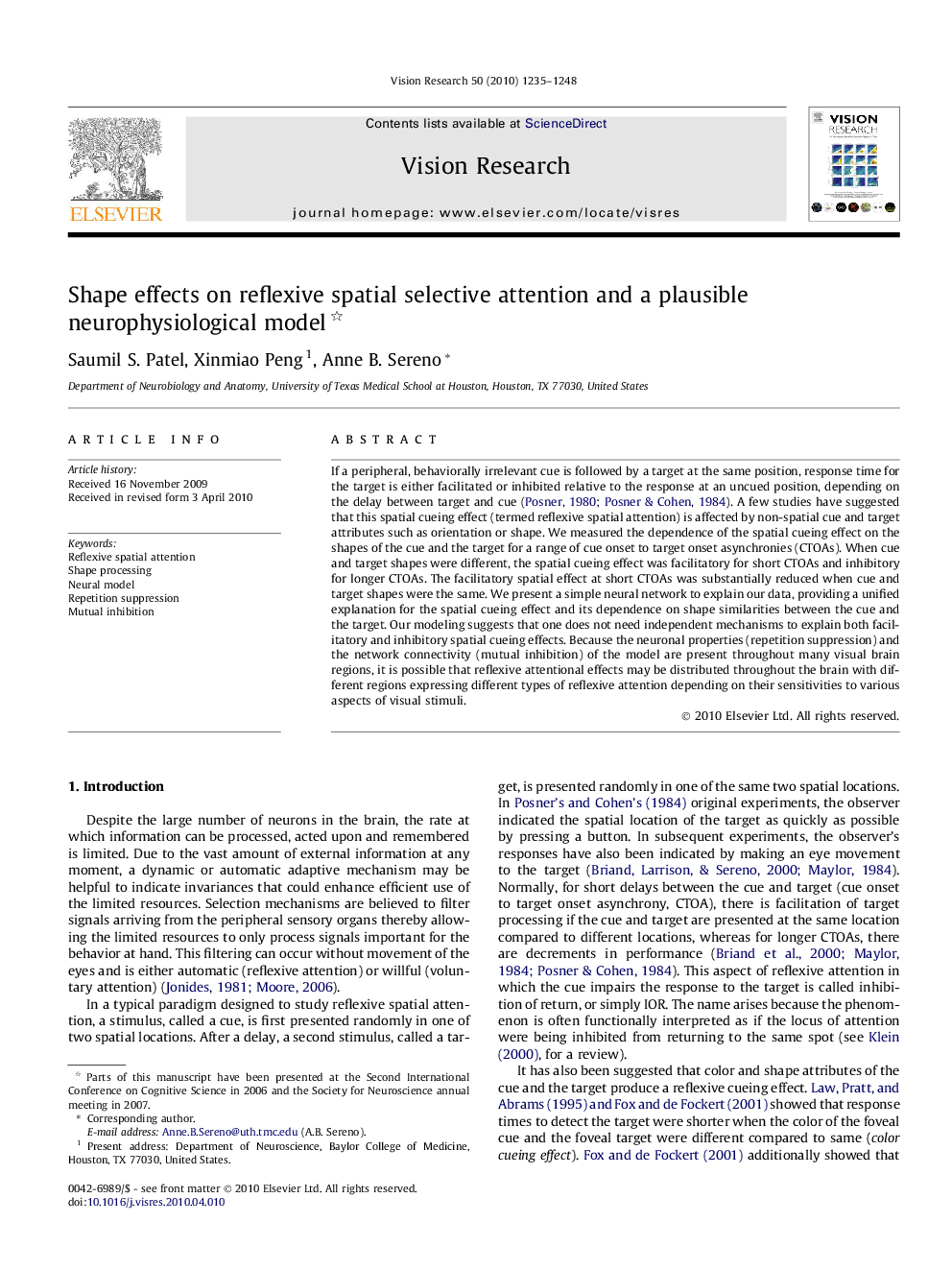| Article ID | Journal | Published Year | Pages | File Type |
|---|---|---|---|---|
| 4034702 | Vision Research | 2010 | 14 Pages |
If a peripheral, behaviorally irrelevant cue is followed by a target at the same position, response time for the target is either facilitated or inhibited relative to the response at an uncued position, depending on the delay between target and cue (Posner, 1980 and Posner and Cohen, 1984). A few studies have suggested that this spatial cueing effect (termed reflexive spatial attention) is affected by non-spatial cue and target attributes such as orientation or shape. We measured the dependence of the spatial cueing effect on the shapes of the cue and the target for a range of cue onset to target onset asynchronies (CTOAs). When cue and target shapes were different, the spatial cueing effect was facilitatory for short CTOAs and inhibitory for longer CTOAs. The facilitatory spatial effect at short CTOAs was substantially reduced when cue and target shapes were the same. We present a simple neural network to explain our data, providing a unified explanation for the spatial cueing effect and its dependence on shape similarities between the cue and the target. Our modeling suggests that one does not need independent mechanisms to explain both facilitatory and inhibitory spatial cueing effects. Because the neuronal properties (repetition suppression) and the network connectivity (mutual inhibition) of the model are present throughout many visual brain regions, it is possible that reflexive attentional effects may be distributed throughout the brain with different regions expressing different types of reflexive attention depending on their sensitivities to various aspects of visual stimuli.
